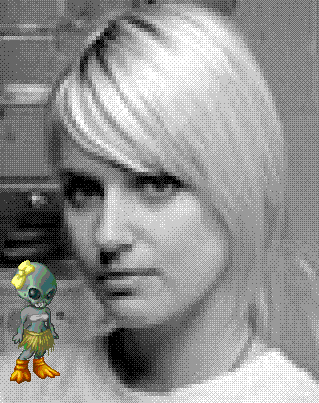
Day: February 5, 2008
Lawrence Lessig Pro-Obama Video
Just voted for Obama in the primary. If you haven't and are looking for some reasons check out law professor Lessig's video (hat tip df).
Just a few quibbles:
1. Using the Wayback machine, Lessig attempts to refute Clinton's claim, regarding an Obama antiwar speech, that "by the next year [it] was off [Obama's] website." Lessig shows the speech was on the site every *month* up until the end of the first year after the speech. The point still stands that after a year the speech was gone.
2. Bad flub: Lessig says "Osama bin Laden" when he means "Saddam Hussein" (talking about "better intelligence regarding _____" leading up to the Iraq war).
3. Obama invoking Reagan was obnoxious any way you slice it. Reagan was a terrible president, nodding in senility while his cronies tore up Latin America and scaring the shit out of everyone talking about Gog and Magog with his finger on the nuclear button. The only "change" he stood for was giving Americans permission to consume after that scold Carter reminded us that certain resources will run out.
I voted for Obama to thank Clinton for her shameless vote for the Iraq war (and lack of apology for same). Lessig's point is good that we need to show the world we don't agree with the Bushes or their supporters such as the Clintons.
More Protocol Notes
...concerning Alexander Galloway's book Protocol: How Control Exists After Decentralization.
1.The final chapter describes old school net art or "net.art." Essentially this developed in the mid-'90s around email lists of a few people dedicated to translating the conceptual art practices of Kosuth, LeWitt, Beuys, et al, from the gallery world to the Web--or to put it more nicely, finding/inventing these types of practices on the fly in the new medium.
2. Galloway says in the 1995-2000 period Net Art concerned "the network" and after 2000 it dealt with "software." The change resulted from the growth of the Web and increased Net speed--much of the early work (e.g., Olia Lialiana's) dealt with the klutziness and limitations of the medium. The book was published in 2004 so he doesn't really deal with blogging or the social networking/bookmarking sites.
3. Examples of '95-'00 net art are discussed. Variations on "links bounced around sites all over the world to create an invisible Beuysian social sculpture," not that different from a Tolkien or Star Trek Web Ring, but less fun. Or requests for non-existent pages sent to remote servers that have the effect of leaving messages on those servers embedded in the request--another way of creating an invisible network-on-the-network that "spatializes" the Web's connections in a quasi-sculptural way. (The latter is a piece by Electronic Disturbance Theatre or EDT.)
4. Galloway describes a late '90s conflict between EDT, which used denial of services attacks to flood servers for political protests, and another group of hacker-artists, HEART (Hackers for Electronic Arts), who wanted the Web free of such disturbances for the larger aggregation and perfection of human knowledge.
5. Galloway assumes art means conceptual, politically tinged, Hans Haacke-like art, and that in the electronic sphere it reflects self-consciously on the medium of the Net or on software. A video piece, say, conceived offline and uploaded for a simple peer-to-peer art transmission he would call "shovelware."
Conclusions to follow. (Possibly--other posts on this topic have been sprinkling in conclusions all along.)
